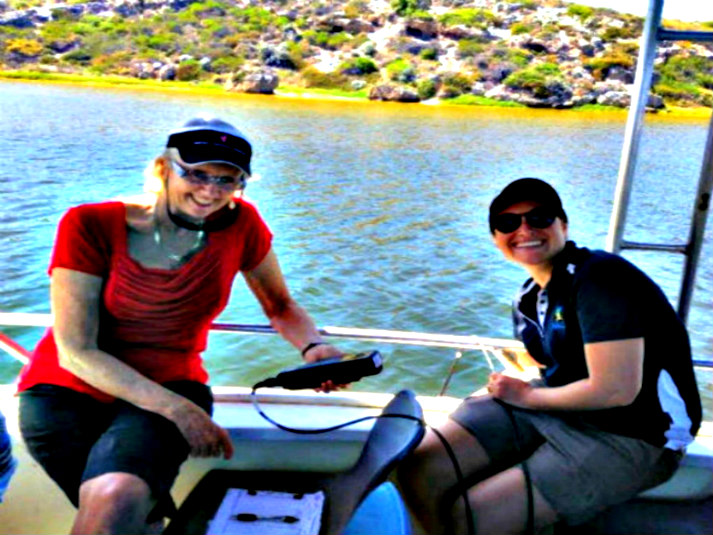
22 Apr Water Quality Monitoring with NACC
People + passion = healthy estuaries at Guilderton
Passionate people are leading the way in a newly developed citizen science project at Guilderton, which aims to collect valuable water quality data on the health of the Moore River Estuary.
Coordinated by the Northern Agricultural Catchment Council (NACC) and with assistance from the Department of Water and Friends of Moore River Estuary, the Healthy Estuaries project is empowering local residents to monitor the health of their own estuary and collect valuable data.
The Healthy Estuaries project will involve water quality data being collected four times per year from five sites along the Moore River Estuary.
For this first round of monitoring, pH levels, turbidity (cloudiness), dissolved oxygen, temperature and conductivity data was collected using a water quality meter and secchi disk.
Water samples were also collected at each site for later laboratory analysis to provide information about the nutrient and heavy metal levels in the estuary.
Seizing the opportunity to collect even more valuable data, participants helped Department of Water staff collect phytoplankton samples that will be analysed by the Phytoplankton Ecology Unit of the Department’s Water Science Branch.
The Friends of Moore River Estuary, a very proactive community group, approached NACC for assistance last year to develop the project.
In response, NACC successfully sought funding through Lotterywest to purchase the necessary water quality meter, and also developed a comprehensive sampling and analysis plan. In October last year, the group undertook water monitoring training through the Department of Water in preparation for the start of regular monitoring.
NACC Coastal and Marine Project Officer Hamish Longbottom said it was inspiring to see residents taking charge of managing their local environment.
“Groups like Friends of Moore River Estuary are setting the standard in coastal conservation for communities across the northern agricultural region,” he said.
“NACC has plans to help communities in other areas adopt this for their estuary.”
A celebratory BBQ followed the monitoring activities, with the final task of the day being to export the data to the Department of Water’s Water Information Reporting database.
“Monitoring of estuary health is becoming increasingly important as our coastal areas become more populated,” Mr Longbottom said. “To see people taking responsibility for looking after their own patch is a positive step in promoting sustainable communities.”
For further information about the Healthy Estuaries project visit:
Healthy Estuaries
http://nacc.com.au/project/healthy-estuaries/
Article by Alexia Parenzee, Northern Agricultural Catchment Council

